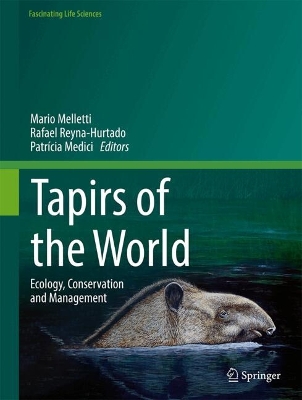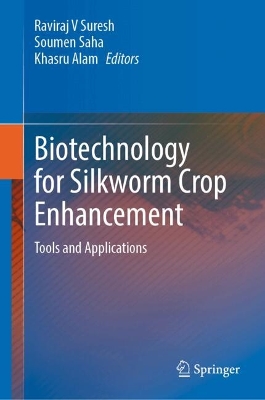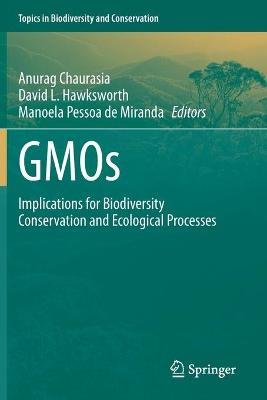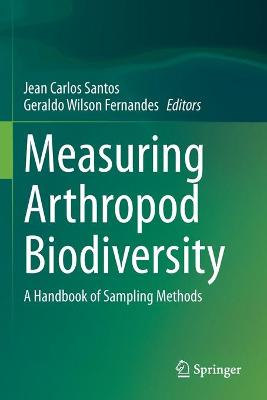Conservation Genetics in the Neotropics
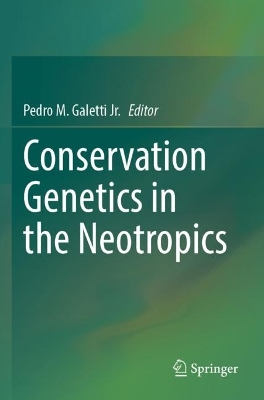 portes grátis
portes grátis
Conservation Genetics in the Neotropics
Galetti Jr., Pedro M.
Springer International Publishing AG
08/2024
583
Mole
9783031348563
15 a 20 dias
Descrição não disponível.
Part I. Introduction.- Chapter. 1. A fresh look at Conservation Genetics in the Neotropics.- Part. II. Species and Conservation.- Chapter. 2. DNA barcoding for assessing biodiversity.- Chapter. 3. Genetic tools for the conservation of bats.- Chapter. 4. Status quo and orchid conservation challenges in the neotropical region.- Chapter. 5. Population Differentiation with Introgression.- Part. III. Assessing and Managing Populations.- Chapter. 6. Phylogeography for neotropical species conservation: Lineages through time and space.- Chapter. 7. Landscape genetics in the Neotropics.- Chapter. 8. Integrative cytogenetics, a conservation approach in Atlantic fish: Concepts, estimates, and uses.- Chapter. 9. In situ, ex situ and on farm conservation of plant genetic resources in Neotropics.- Chapter. 10. Genetic management applied to conservation of reduced and fragmented wild populations.- Chapter. 11. Chromosome variability of manatees (Trichechus spp.) from Brazil: the state of the art, challenges and perspectives for management and conservation.- Chapter. 12. Supplemental technologies for freshwater fish conservation.- Part. IV. Wildlife Forensic Genetics, Ecotoxicology and Conservation.- Chapter. 13. Giving names to the characters: identifying, tracing and estimating the multiple use of aquatic wildlife in Brazil.- Chapter. 14. Wildlife forensic genetics: a tool for resolving wildlife crimes and support species conservation.- Chapter. 15. Environmental ecogenotoxicity and conservation.- Part. V. Assessing Molecular Ecology and Communities.- Chapter. 16. Molecular ecology in neotropical mammals: key aspects for conservation.- Chapter. 17. Molecular tools to analyze the effects of roads on wildlife in the Neotropics.- Chapter. 18. Environmental and invertebrate-derived DNA: a powerful approach for surveying and monitoring biodiversity.- Part. VI. Conservation Genomics.- Chapter. 19. Conservation genomics of neotropical carnivores.- Chapter. 20. Challenges with conservation genetics and genomics in neotropical forest.- Chapter. 21. Integrating genomic and cytogenetic data to study the evolutionary history of arapaimas and arowanas in the Neotropics.- Part. VII. Science Learning and Conservation.- Chapter. 22. Environmental Education on Practices for Biodiversity Conservation.- Chapter. 23. Phenotypic plasticity of plants in formal and non-formal education: genetics in everyday life.- Index.
Este título pertence ao(s) assunto(s) indicados(s). Para ver outros títulos clique no assunto desejado.
Conservation genetics;hidden biodiversity;species delimitation;molecular phylogeny;population genetics;forensic genetics;conservation genomics;environmental DNA;adaptive genetics;science learning and conservation
Part I. Introduction.- Chapter. 1. A fresh look at Conservation Genetics in the Neotropics.- Part. II. Species and Conservation.- Chapter. 2. DNA barcoding for assessing biodiversity.- Chapter. 3. Genetic tools for the conservation of bats.- Chapter. 4. Status quo and orchid conservation challenges in the neotropical region.- Chapter. 5. Population Differentiation with Introgression.- Part. III. Assessing and Managing Populations.- Chapter. 6. Phylogeography for neotropical species conservation: Lineages through time and space.- Chapter. 7. Landscape genetics in the Neotropics.- Chapter. 8. Integrative cytogenetics, a conservation approach in Atlantic fish: Concepts, estimates, and uses.- Chapter. 9. In situ, ex situ and on farm conservation of plant genetic resources in Neotropics.- Chapter. 10. Genetic management applied to conservation of reduced and fragmented wild populations.- Chapter. 11. Chromosome variability of manatees (Trichechus spp.) from Brazil: the state of the art, challenges and perspectives for management and conservation.- Chapter. 12. Supplemental technologies for freshwater fish conservation.- Part. IV. Wildlife Forensic Genetics, Ecotoxicology and Conservation.- Chapter. 13. Giving names to the characters: identifying, tracing and estimating the multiple use of aquatic wildlife in Brazil.- Chapter. 14. Wildlife forensic genetics: a tool for resolving wildlife crimes and support species conservation.- Chapter. 15. Environmental ecogenotoxicity and conservation.- Part. V. Assessing Molecular Ecology and Communities.- Chapter. 16. Molecular ecology in neotropical mammals: key aspects for conservation.- Chapter. 17. Molecular tools to analyze the effects of roads on wildlife in the Neotropics.- Chapter. 18. Environmental and invertebrate-derived DNA: a powerful approach for surveying and monitoring biodiversity.- Part. VI. Conservation Genomics.- Chapter. 19. Conservation genomics of neotropical carnivores.- Chapter. 20. Challenges with conservation genetics and genomics in neotropical forest.- Chapter. 21. Integrating genomic and cytogenetic data to study the evolutionary history of arapaimas and arowanas in the Neotropics.- Part. VII. Science Learning and Conservation.- Chapter. 22. Environmental Education on Practices for Biodiversity Conservation.- Chapter. 23. Phenotypic plasticity of plants in formal and non-formal education: genetics in everyday life.- Index.
Este título pertence ao(s) assunto(s) indicados(s). Para ver outros títulos clique no assunto desejado.

